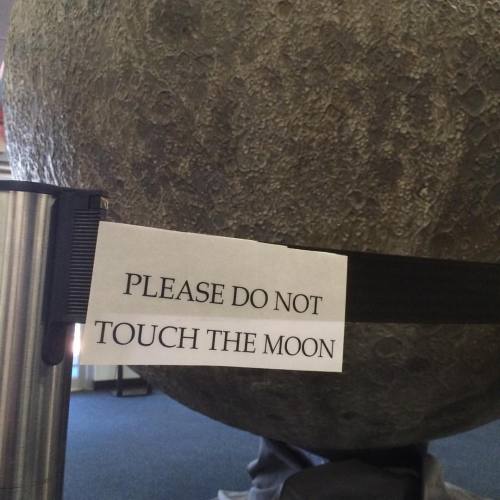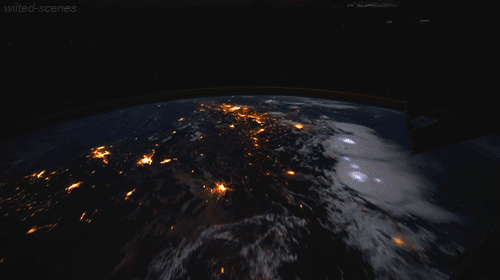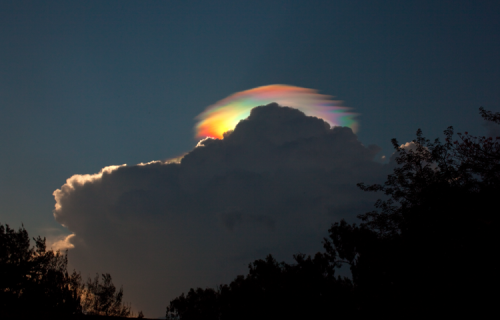The Vanderbilt Planetarium Asks You To Refrain From Following Your Dreams.

The Vanderbilt Planetarium asks you to refrain from following your dreams.
More Posts from Alienoftheastro and Others









All Alone In The Night: timelapse from the ISS (x)
damn Bill Nye is smooth

Solar System: OSIRIS-REx and Bennu
Let us lead you on a journey of our solar system. Here are some things to know this week.
This week, we’re setting out on an ambitious quest: our first mission to retrieve a sample from an asteroid and return it to the Earth.
1. Take It from the Beginning

Some asteroids are time capsules from the very beginnings of our solar system. Some meteorites that fall to Earth originate from asteroids. Laboratory tests of materials found in meteorites date to before the sun started shining. OSIRIS-REx’s destination, the near-Earth asteroid Bennu, intrigues scientists in part because it is thought to be composed of the primitive building blocks of the solar system.
Meet asteroid Bennu
Take a tour of asteroids in our solar system.
2. Creating the Right Ship for the Journey

At the heart of the OSIRIS-REx mission is the robotic spacecraft that will fly to Bennu, acting as the surrogate eyes and hands of researchers on Earth. With its solar panels deployed, the craft is about 20 feet (6 meters) long and 10 feet (3 meters) high. Packed into that space are the sample retrieval system, the capsule for returning the sample to the ground on Earth, plus all the hardware for navigation and communicating with home.
Explore the instruments and how they work
3. School of Hard Rocks

If you’re a teacher or a student, the OSIRIS-REx mission and exploring asteroids make for some engaging lesson material. Here are some of the things you can try.
Find dozens of lesson plans
4. Standing (or Flying) on the Shoulders of Giants

OSIRIS-REx is not the first time we have explored an asteroid. Several robotic spacecraft led the way, such as the NEAR Shoemaker probe that orbited, and even landed on, the asteroid Eros.
Meet the asteroid pioneers and see what they discovered
5. The Probability of Successfully Navigating an Asteroid Field is…Pretty High

How much of what we see in movies about asteroids is fact, and how much is fiction? This video lays out the basics. (Spoiler alert: even though there are millions of them, the average distance between asteroids in the main belt is something like 1.8 million miles, or about three million kilometers.)
+ Watch + See more videos that explain asteroids and the mission
Discover the full list of 10 things to know about our solar system this week HERE.
Make sure to follow us on Tumblr for your regular dose of space: http://nasa.tumblr.com

Is there anybody out there?

An extremely rare rainbow-colored pileus iridescent cloud over Ethiopia.
-
 yther liked this · 1 month ago
yther liked this · 1 month ago -
 lazypuppypolice reblogged this · 1 month ago
lazypuppypolice reblogged this · 1 month ago -
 sleepydreameroncloud9 reblogged this · 1 month ago
sleepydreameroncloud9 reblogged this · 1 month ago -
 angel144k liked this · 2 months ago
angel144k liked this · 2 months ago -
 bambeluna liked this · 3 months ago
bambeluna liked this · 3 months ago -
 eeatmydust reblogged this · 3 months ago
eeatmydust reblogged this · 3 months ago -
 daderalll liked this · 3 months ago
daderalll liked this · 3 months ago -
 humancath liked this · 3 months ago
humancath liked this · 3 months ago -
 somethinginspiringhere reblogged this · 3 months ago
somethinginspiringhere reblogged this · 3 months ago -
 daniellesjourneyxo liked this · 3 months ago
daniellesjourneyxo liked this · 3 months ago -
 thesolitarycat liked this · 3 months ago
thesolitarycat liked this · 3 months ago -
 egyptianswimmer liked this · 3 months ago
egyptianswimmer liked this · 3 months ago -
 whyufakin reblogged this · 3 months ago
whyufakin reblogged this · 3 months ago -
 demonwithouthorns liked this · 3 months ago
demonwithouthorns liked this · 3 months ago -
 22divinefeminine reblogged this · 3 months ago
22divinefeminine reblogged this · 3 months ago -
 kurdishwifeyyy reblogged this · 3 months ago
kurdishwifeyyy reblogged this · 3 months ago -
 wishfulpainting reblogged this · 3 months ago
wishfulpainting reblogged this · 3 months ago -
 grrrlsinner reblogged this · 3 months ago
grrrlsinner reblogged this · 3 months ago -
 t-keacidseegod reblogged this · 3 months ago
t-keacidseegod reblogged this · 3 months ago -
 hoellenangel reblogged this · 3 months ago
hoellenangel reblogged this · 3 months ago -
 wkend liked this · 3 months ago
wkend liked this · 3 months ago -
 ellyisc00l liked this · 3 months ago
ellyisc00l liked this · 3 months ago -
 seashell-c liked this · 3 months ago
seashell-c liked this · 3 months ago -
 destinymarie reblogged this · 3 months ago
destinymarie reblogged this · 3 months ago -
 destinymarie liked this · 3 months ago
destinymarie liked this · 3 months ago -
 iimsc liked this · 3 months ago
iimsc liked this · 3 months ago -
 warriorhealer reblogged this · 3 months ago
warriorhealer reblogged this · 3 months ago -
 warriorhealer liked this · 3 months ago
warriorhealer liked this · 3 months ago -
 frieren-imposter liked this · 3 months ago
frieren-imposter liked this · 3 months ago -
 expo-marker liked this · 3 months ago
expo-marker liked this · 3 months ago -
 qehenna reblogged this · 3 months ago
qehenna reblogged this · 3 months ago -
 qehenna liked this · 3 months ago
qehenna liked this · 3 months ago -
 sorryimbriannaa reblogged this · 5 months ago
sorryimbriannaa reblogged this · 5 months ago -
 martid reblogged this · 6 months ago
martid reblogged this · 6 months ago -
 martid liked this · 6 months ago
martid liked this · 6 months ago -
 detefabulanarratur reblogged this · 6 months ago
detefabulanarratur reblogged this · 6 months ago -
 detefabulanarratur liked this · 6 months ago
detefabulanarratur liked this · 6 months ago -
 tommi-with-an-i reblogged this · 7 months ago
tommi-with-an-i reblogged this · 7 months ago -
 ultralaser reblogged this · 8 months ago
ultralaser reblogged this · 8 months ago -
 onlyasucker liked this · 1 year ago
onlyasucker liked this · 1 year ago -
 convictuei reblogged this · 1 year ago
convictuei reblogged this · 1 year ago -
 convictuei liked this · 1 year ago
convictuei liked this · 1 year ago -
 batidas-do-oceano liked this · 1 year ago
batidas-do-oceano liked this · 1 year ago -
 contextodiario reblogged this · 1 year ago
contextodiario reblogged this · 1 year ago -
 the9girl reblogged this · 1 year ago
the9girl reblogged this · 1 year ago
